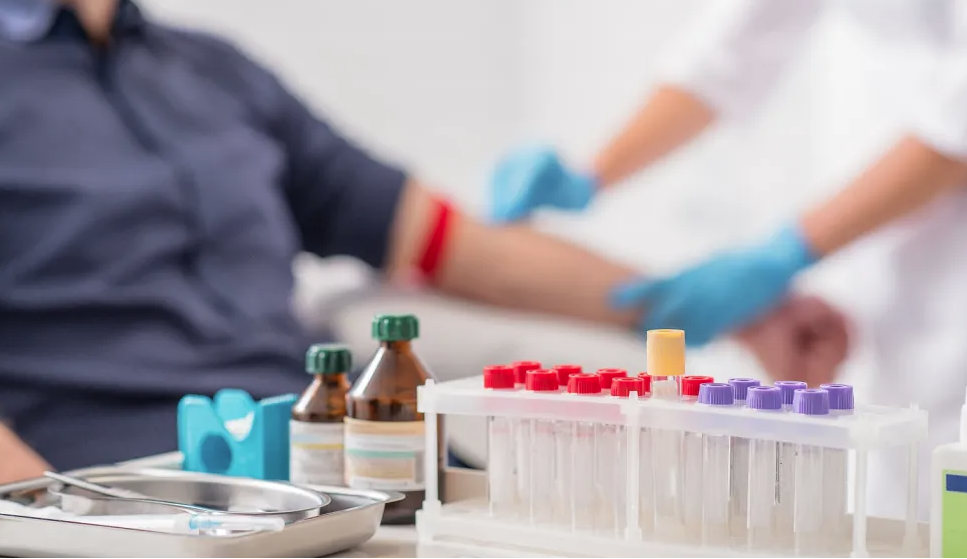- A person’s intrinsic capacity, which is a gauge of aging, is the total of their mental and physical abilities.
- An essential component of good aging is preserving mental and physical abilities.
- It used to be expensive and time-consuming to evaluate intrinsic capacity.
- Researchers have now created a technique that uses a single drop of blood or saliva to evaluate intrinsic capacity and age-related decline.
- In order to preserve mental and physical function as people age, they propose that this exam might be used to monitor aging and direct focused therapies.

The World Health Organization (WHO) defines intrinsic capacity (IC) (Trusted Source). Organization for World Health An internationally renowned organization Visit the source as “all of a person’s mental and physical abilities, including the ability to move, think, see, hear, and remember.” Numerous circumstances, such as the existence of illnesses, injuries, and age-related changes, affect an individual’s intrinsic capacity. The secret to aging well is to preserve your innate capacity. But up until now, evaluating intrinsic capacity has required specialized tools and skilled workers.
A recent study found that evaluating DNA methylation Trusted Source in blood samples to estimate intrinsic capacity can accurately predict all-cause death.
According to the study, which was published in Nature AgingTrusted Source, the IC clock may be a helpful instrument for monitoring aging and directing focused therapies to preserve function as people age.
One of the advantages of this test, says Holland, is that it is accessible and noninvasive. It just requires a simple sample of blood or saliva. So to determine what steps, if any, to take if they want to prevent future health problems, it tells us how well you are aging rather than how old you are, ” Holland says.The findings were also welcomed by Elena Rolt, MSc, DipION, IFMCP, cofounder and Functional Medicine Practitioner of Health Miro and a registered Nutritional Therapist and Functional Medicine Practitioner.
“As a good biochemical indicator of biological aging, the DNA methylation-based intrinsic capacity (DNAm) test holds great promise, ” Rolt told MNU. “It is also a way to take account of functional aging much more precisely than the routine epigenetic clock tests. “It may be of particular interest in individualized aging therapy and preventive approaches, because it represents immunological aging and physical capacity and lifestyle risk factors, ” she added.
It is a warning, Rolt has said, since its application in clinical practice will require further validation and it should also be used in conjunction with other indicators such as PhenoAge, GrimAge and functional testing.
Samples of blood and saliva provide insight into cellular aging.
Based on a population sample of 1, 014 people from the INSPIRE-T cohort (ages 20 to 101), the authors built an IC score from five different aspects of age-related decline:
- Cognition
- Locomotion
- sensory (vision and hearing)
- Psychological
- vitality.
Blood and saliva samples were used to collect information on DNA methylation
Trusted Source
— a gene activation or deactivation mechanism DNA methylation alters over time through developmental mutations and environmental conditions, and abnormal methylation patterns
Trusted Source have been linked to several diseases.
They used that and the age – related decline data to build an epigenetic hypothesis Trusted Source
IC predictor (‘IC clock’ or ‘DNAm IC’ ), and to evaluate associations of the IC clock with mortality.
DNAm IC was also strongly associated with overall health, the researchers said. People with the highest DNAm IC had better lung function, faster walking speeds, higher bone mineral density and were more likely to say they were healthy.
And that people with a high DNAm IC lived 5.5 years longer on average than people with a low DNAm IC.
Holland told us that’s a very important finding: “And scientifically that’s telling us that there is very strong association between high IC and better immune function, lower chronic inflammation and lower risk of hypertension, heart failure, stroke and other age related diseases. ”
“Just simply, ” he explained, “if your body is functioning well internally you are more likely to live longer and stay healthier – and thus this test not only give you snapshot in the moment; may also give you snapshot in the future.
Expert advice on how to prolong your years of good health
To promote healthy aging, Holland, Tiryaki, and Rolt suggested certain actions. These consist of: Consuming a diet high in fresh produce, whole grains, and healthy fats like those in nuts, olive oil, and oily salmon, such as the MIND or Mediterranean diets Tiryaki stressed that regular exercise “supports locomotion and vigor and influences mitochondrial function and immunological health, both of which are associated to IC.” This includes aerobic, strength, and balance activities. Healthy aging is linked to both cognitive and social engagement, maintaining social networks and keeping your brain active. making sure you control your chronic illnesses and stress. “It combines molecular biology with real-world outcomes like mobility, cognition, and lifespan,” Holland told us, describing the DNA clock as a significant breakthrough in functional aging science. This study establishes the foundation for employing personalized epigenetic markers to direct interventions in precision public health, longevity medicine, and preventive geriatrics, even if more validation is required, particularly in older persons with low IC.


